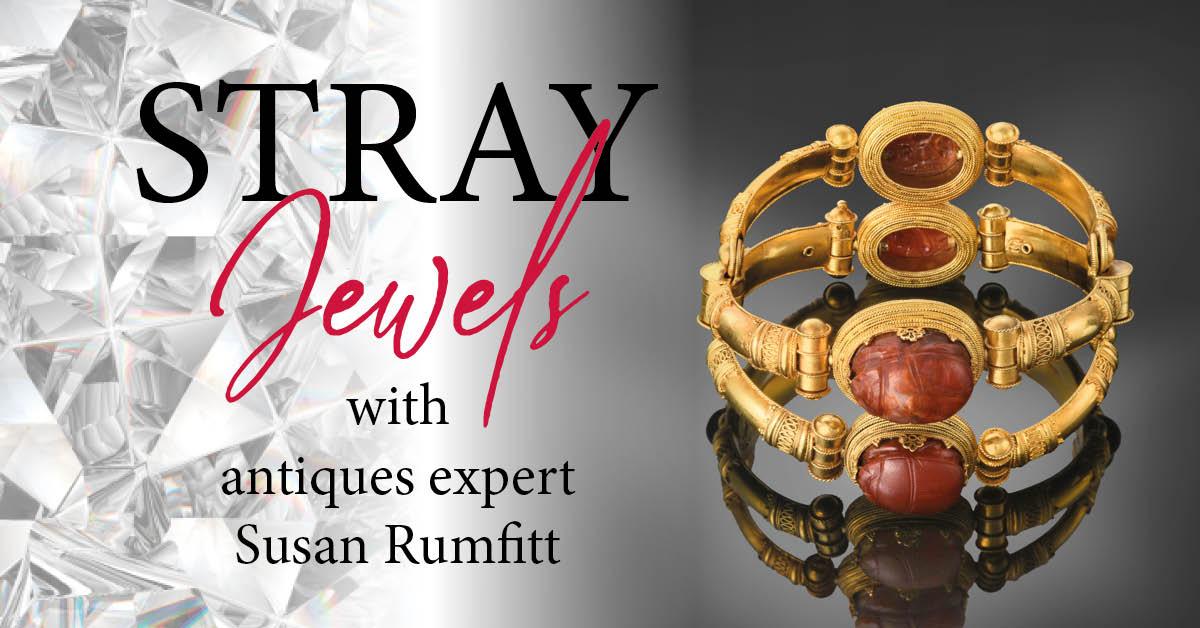Subscribe to trusted local news
In a time of both misinformation and too much information, quality journalism is more crucial than ever. By subscribing, you can help us get the story right.
- Subscription costs less than £1 a week with an annual plan.
Already a subscriber? Log in here.
30
Oct 2021
Stray Jewels: The art of archeological inspired jewellery


 Stray Jewels is a monthly column written by BBC Antiques Roadshow jewellery specialist, Susan Rumfitt. Susan started her career working for Christie’s auctioneers in Glasgow before establishing her own jewellery department, The Gallery in Harrogate. In 2006, she joined the Antiques Roadshow and has since built up an extensive knowledge of and passion for fine jewellery. This week Susan examines the work of 19th century Italian jeweller, Fortunato Pio Castellani
Stray Jewels is a monthly column written by BBC Antiques Roadshow jewellery specialist, Susan Rumfitt. Susan started her career working for Christie’s auctioneers in Glasgow before establishing her own jewellery department, The Gallery in Harrogate. In 2006, she joined the Antiques Roadshow and has since built up an extensive knowledge of and passion for fine jewellery. This week Susan examines the work of 19th century Italian jeweller, Fortunato Pio Castellani
Whilst browsing through the catalogue for the forthcoming jewellery sale at Tennants on November 13, I was drawn to the most fabulous bangle that is on offer. Lot 2396, an 'Archaeological Etruscan Revival Style Bangle'. It is made of gold and is set with cornelian scarabs within swivel mounts. The bangle has a pre-sale estimate of £4,000-6,000. Although not dated in the catalogue, the jeweller who made it must have been a great fan of one of the most important archaeological revival jewellers of all time, Fortunato Pio Castellani.
Many Victorian and even contemporary jewellery designers have been drawn to his work due to the boldness in design. Castellani jewellery is highly sought after by collectors. In 2006 Sotheby’s Auctioneers in New York sold the 'Judith H Siegal Collection of Castellani & Giuliano Jewellery'. Siegal’s collection was put together over 20 years and brought together some of the finest works of art that were produced by these jewellers. In the collection was a beautiful gold bangle also set with scarabs, by Castellani.
Who was Castellani?
The firm was founded by Fortunato Pio Castellani and the style of jewellery that was produced was known as Italian Archaeological Jewellery. Fortunato opened his shop in Rome in 1814. In 1826 he met Michaelango Caetani who became his life long friend and collaborator. It was Michaelango who inspired Fortunato to imitate the gold work of the ancient world and get inspiration for his jewellery from ancient jewels. His work was an instant hit.
The thriving business was continued by two of Fortunato’s sons, Alessandro (1823-1883) and Augusto (1829-1914). The jewellery was extraordinary. Works of art in gold and set with micro mosaics, enamel, scarabs and decorative techniques of granulation and filigree work. This was the destination shop for the Grand Tourist of the 19th century. The pieces are identified by a very distinctive mark of interlaced C’s.
In the November 2020 jewellery sale, Tennants offered a gold bracelet by Castellani which sold for £20,000. Despite being dated circa 1860, the curved batons give an almost contemporary feel to the bracelet. The lion heads terminals on the bracelets draw us back to the revival style.
The Popularity of Victorian Revival Jewellery
Victorian jewellery certainly doesn’t appeal to everyone and comes in and out of favour within the auction world. What has never changed is the fascination with the Archaeological, Egyptian or Renaissance Revival jewels of the mid Victorian period. The Castellani family exhibited their jewellery at the 1862 International Exhibition in London and as a result their popularity grew in Britain. Jewellers were copying their style well into the 1890’s. Even pieces which are not attributed to a specific designer do well at auction, particularly when they are well executed. In their Spring Sale earlier this year, Tennants had a delightful Archaeological Revival Millefiori Brooch, dated circa 1880, within a fitted case – always a bonus. This was a particularly quirky brooch as there was a frog motif to the pendant and was referred to as “froggy brooch”, by the original owners.
Victorian jewellery may appear quite serious but it as we can see it can be great fun too! Happy jewellery hunting.
0